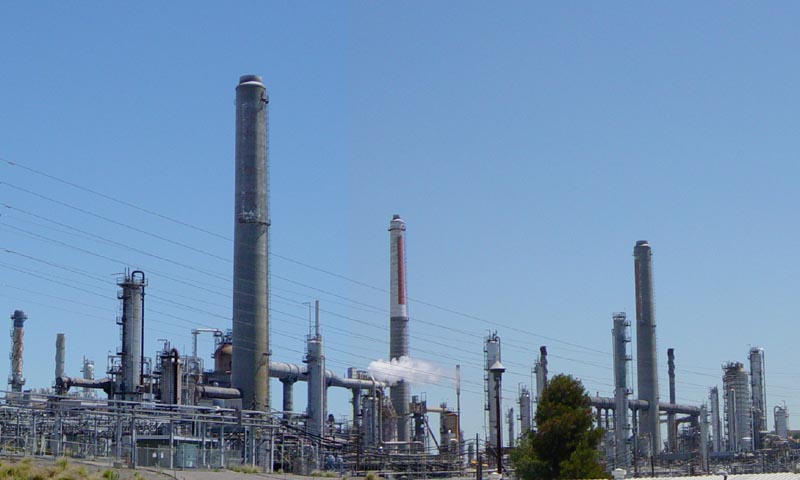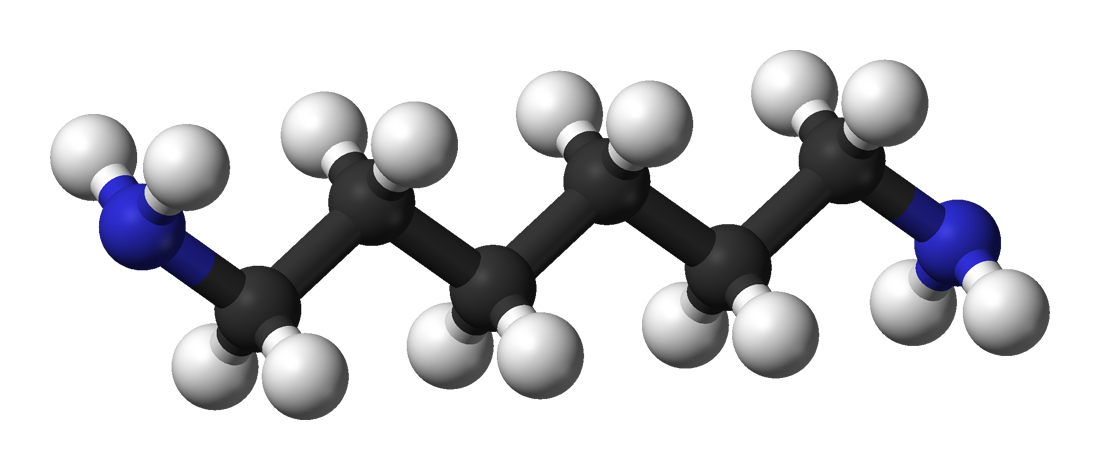|
Methylenecyclopropene
3-Methylenecyclopropene, also called methylenecyclopropene or triafulvene, is a hydrocarbon with chemical formula . It is a colourless gas that polymerizes readily as a liquid or in solution but is stable as a gas.W. E. Billups , Long Jin Lin , Edward W. Casserly "Synthesis of Methylenecyclopropene" J. Am. Chem. Soc., 1984, volume 106, pp 3698–3699. This highly strained and reactive molecule was synthesized and characterized for the first time in 1984, and has been the subject of considerable experimental and theoretical interest. It is an example of a cross-conjugated alkene, being composed of cyclopropene with an exocyclic double bond attached. Description Methylenecyclopropene is the smallest of the fulvenes (a family of unstable, cyclic molecules, conjugated transversally with an odd number of carbon atoms in the ring). The structure of methylenecyclopropene has two interacting double bonds, which represents the simplest transversally conjugated π-bonding system. It i ... [...More Info...] [...Related Items...] OR: [Wikipedia] [Google] [Baidu] |
Methylenecyclopropane
Methylenecyclopropane is an organic compound with the formula (CH2)2CCH2. It is a colourless easily condensed gas that is used as a reagent in organic synthesis. Synthesis Methylenecyclopropane can be synthesised via an intramolecular cyclisation reaction from methallyl chloride by treatment with a strong base such as sodium amide. : Reactions Being a strained and unsaturated molecule methylenecyclopropane undergoes many reactions, especially in the presence of metal catalysts. For example, methylenecyclopropanes can be converted to cyclobutenes in the presence of a Platinum catalyst.''PtCl2-Catalyzed Rearrangement of Methylenecyclopropanes'' Alois Fürstner and Christophe Aïssa J. Am. Chem. Soc.; 2006; 128(19) pp 6306 -6307Abstract/ref> This can be considered similar to the ring expansion seen in vinylcyclopropane rearrangements : Substituted methylenecyclopropanes can also be involved in trimethylenemethane cycloaddition reactions. See also * Methylenecyclopropene * 1- ... [...More Info...] [...Related Items...] OR: [Wikipedia] [Google] [Baidu] |
Fulvenes
Fulvenes are the class of hydrocarbon obtained by formally cross-conjugating one ring and methylidene through a common exocyclic double bond. The name is derived from fulvene, which has one pentagonal ring. Other examples include methylenecyclopropene (triafulvene) and heptafulvene. Subclasses Several types of fulvenes are defined. They are: *pentafulvene * triafulvene *heptafulvene *nonafulvene Preparation Fulvenes are readily prepared by the condensation of cyclopentadiene and aldehydes and ketones: :C5H6 + R2C=O → C4H4C=CR2 + H2O Thiele is credited with discovering this reaction. Modern synthesis of fulvenes employ buffer systems. Ligand in organometallic chemistry Fulvenes are common ligands and ligand precursors in organometallic chemistry. 2,3,4,5-Tetramethylfulvene, abbreviated Me4Fv, results from the deprotonation of cationic pentamethylcyclopentadienyl complexes. Some Me4Fv complexes are called tuck-in complex In organometallic chemistry, a tuck-in complex ... [...More Info...] [...Related Items...] OR: [Wikipedia] [Google] [Baidu] |
Fulvene
Fulvene (pentafulvene) is a hydrocarbon with the formula (CH=CH)2C=CH2. It is a prototype of a cross-conjugated hydrocarbon. Fulvene is rarely encountered, but substituted derivatives ( fulvenes) are numerous. They are mainly of interest as ligands and precursors to ligands in organometallic chemistry. See also *Fulvalene Fulvalene (bicyclopentadienylidene) is the member of the fulvalene family with the molecular formula C10H8. It is of theoretical interest as one of the simplest non-benzenoid conjugated hydrocarbons. Fulvalene is an unstable isomer of the mor ... * Methylenecyclopropene References {{Authority control Hydrocarbons Vinylidene compounds Cyclopentadienes ... [...More Info...] [...Related Items...] OR: [Wikipedia] [Google] [Baidu] |
Heptafulvene
Fulvenes are the class of hydrocarbon obtained by formally cross-conjugating one ring and methylidene through a common exocyclic double bond. The name is derived from fulvene, which has one pentagonal ring. Other examples include methylenecyclopropene (triafulvene) and heptafulvene. Subclasses Several types of fulvenes are defined. They are: *pentafulvene * triafulvene *heptafulvene *nonafulvene Preparation Fulvenes are readily prepared by the condensation of cyclopentadiene and aldehydes and ketones: :C5H6 + R2C=O → C4H4C=CR2 + H2O Thiele is credited with discovering this reaction. Modern synthesis of fulvenes employ buffer systems. Ligand in organometallic chemistry Fulvenes are common ligands and ligand precursors in organometallic chemistry. 2,3,4,5-Tetramethylfulvene, abbreviated Me4Fv, results from the deprotonation of cationic pentamethylcyclopentadienyl complexes. Some Me4Fv complexes are called tuck-in complex In organometallic chemistry, a tuck-in complex ... [...More Info...] [...Related Items...] OR: [Wikipedia] [Google] [Baidu] |
Hydrocarbon
In organic chemistry, a hydrocarbon is an organic compound consisting entirely of hydrogen and carbon. Hydrocarbons are examples of group 14 hydrides. Hydrocarbons are generally colourless and hydrophobic, and their odors are usually weak or exemplified by the odors of gasoline and lighter fluid. They occur in a diverse range of molecular structures and phases: they can be gases (such as methane and propane), liquids (such as hexane and benzene), low melting solids (such as paraffin wax and naphthalene) or polymers (such as polyethylene and polystyrene). In the fossil fuel industries, ''hydrocarbon'' refers to the naturally occurring petroleum, natural gas and coal, and to their hydrocarbon derivatives and purified forms. Combustion of hydrocarbons is the main source of the world's energy. Petroleum is the dominant raw-material source for organic commodity chemicals such as solvents and polymers. Most anthropogenic (human-generated) emissions of greenhouse gases are carbon di ... [...More Info...] [...Related Items...] OR: [Wikipedia] [Google] [Baidu] |
Hydrocarbons
In organic chemistry, a hydrocarbon is an organic compound consisting entirely of hydrogen and carbon. Hydrocarbons are examples of group 14 hydrides. Hydrocarbons are generally colourless and hydrophobic, and their odors are usually weak or exemplified by the odors of gasoline and lighter fluid. They occur in a diverse range of molecular structures and phases: they can be gases (such as methane and propane), liquids (such as hexane and benzene), low melting solids (such as paraffin wax and naphthalene) or polymers (such as polyethylene and polystyrene). In the fossil fuel industries, ''hydrocarbon'' refers to the naturally occurring petroleum, natural gas and coal, and to their hydrocarbon derivatives and purified forms. Combustion of hydrocarbons is the main source of the world's energy. Petroleum is the dominant raw-material source for organic commodity chemicals such as solvents and polymers. Most anthropogenic (human-generated) emissions of greenhouse gases are carb ... [...More Info...] [...Related Items...] OR: [Wikipedia] [Google] [Baidu] |
Methylene Group
In organic chemistry, a methylene group is any part of a molecule that consists of two hydrogen atoms bound to a carbon atom, which is connected to the remainder of the molecule by two single bonds. The group may be represented as , where the '<' denotes the two bonds. This can equally well be represented as . This stands in contrast to a situation where the carbon atom is bound to the rest of the molecule by a double bond, which is preferably called a , represented . Formerly the methylene name was used for both isomers. The name ““ can be used for the single-bonded isomer, to emphatically exclude methylidene. The distinction is often important, because the double bond is chemically di ... [...More Info...] [...Related Items...] OR: [Wikipedia] [Google] [Baidu] |
Cyclopropenone
Cyclopropenone is an organic compound with molecular formula C3H2O consisting of a cyclopropene carbon framework with a ketone functional group. It is a colorless, volatile liquid that boils near room temperature. Neat cyclopropenone polymerizes upon standing at room temperature. The chemical properties of the compound are dominated by the strong polarization of the carbonyl group, which gives a partial positive charge with aromatic stabilization on the ring and a partial negative charge on oxygen. It is an aromatic compound. See also * Diphenylcyclopropenone * Deltic acid *Tropone Tropone or 2,4,6-cycloheptatrien-1-one is an organic compound with some importance in organic chemistry as a non-benzenoid aromatic. The compound consists of a ring of seven carbon atoms with three conjugated alkene groups and a ketone group. Th ... References {{Molecules detected in outer space Enones Simple aromatic rings Cyclopropenes Non-benzenoid aromatic carbocycles ... [...More Info...] [...Related Items...] OR: [Wikipedia] [Google] [Baidu] |
Cyclopropane
Cyclopropane is the cycloalkane with the molecular formula (CH2)3, consisting of three methylene groups (CH2) linked to each other to form a ring. The small size of the ring creates substantial ring strain in the structure. Cyclopropane itself is mainly of theoretical interest but many of its derivatives are of commercial or biological significance. History Cyclopropane was discovered in 1881 by August Freund, who also proposed the correct structure for the substance in his first paper. Freund treated 1,3-dibromopropane with sodium, causing an intramolecular Wurtz reaction leading directly to cyclopropane. The yield of the reaction was improved by Gustavson in 1887 with the use of zinc instead of sodium. Cyclopropane had no commercial application until Henderson and Lucas discovered its anaesthetic properties in 1929; industrial production had begun by 1936. In modern anaesthetic practice, it has been superseded by other agents. Anaesthesia Cyclopropane was introduced into cli ... [...More Info...] [...Related Items...] OR: [Wikipedia] [Google] [Baidu] |
Cyclopropene
Cyclopropene is an organic compound with the formula . It is the simplest cycloalkene. Because the ring is highly strained, cyclopropene is difficult to prepare and highly reactive. This colorless gas has been the subject for many fundamental studies of bonding and reactivity. It does not occur naturally, but derivatives are known in some fatty acids. Derivatives of cyclopropene are used commercially to control ripening of some fruit. Structure and bonding The molecule has a triangular structure. The reduced length of the double bond compared to a single bond causes the angle opposite the double bond to narrow to about 51° from the 60° angle found in cyclopropane. As with cyclopropane, the carbon–carbon bonding in the ring has increased p character: the alkene carbon atoms use sp2.68 hybridization for the ring. Synthesis of cyclopropene and derivatives Early syntheses The first confirmed synthesis of cyclopropene, carried out by Dem'yanov and Doyarenko, involved the the ... [...More Info...] [...Related Items...] OR: [Wikipedia] [Google] [Baidu] |
Polymerization
In polymer chemistry, polymerization (American English), or polymerisation (British English), is a process of reacting monomer, monomer molecules together in a chemical reaction to form polymer chains or three-dimensional networks. There are many forms of polymerization and different systems exist to categorize them. In chemical compounds, polymerization can occur via a variety of reaction mechanisms that vary in complexity due to the functional groups present in the reactants and their inherent steric effects. In more straightforward polymerizations, alkenes form polymers through relatively simple free-radical reaction, radical reactions; in contrast, reactions involving substitution at a carbonyl group require more complex synthesis due to the way in which reactants polymerize. Alkanes can also be polymerized, but only with the help of strong acids. As alkenes can polymerize in somewhat straightforward radical reactions, they form useful compounds such as polyethylene and p ... [...More Info...] [...Related Items...] OR: [Wikipedia] [Google] [Baidu] |
Electron Affinity
The electron affinity (''E''ea) of an atom or molecule is defined as the amount of energy released when an electron attaches to a neutral atom or molecule in the gaseous state to form an anion. ::X(g) + e− → X−(g) + energy Note that this is not the same as the enthalpy change of electron capture ionization, which is defined as negative when energy is released. In other words, the enthalpy change and the electron affinity differ by a negative sign. In solid state physics, the electron affinity for a surface is defined somewhat differently ( see below). Measurement and use of electron affinity This property is used to measure atoms and molecules in the gaseous state only, since in a solid or liquid state their energy levels would be changed by contact with other atoms or molecules. A list of the electron affinities was used by Robert S. Mulliken to develop an electronegativity scale for atoms, equal to the average of the electrons affinity and ionization potential. Other ... [...More Info...] [...Related Items...] OR: [Wikipedia] [Google] [Baidu] |




